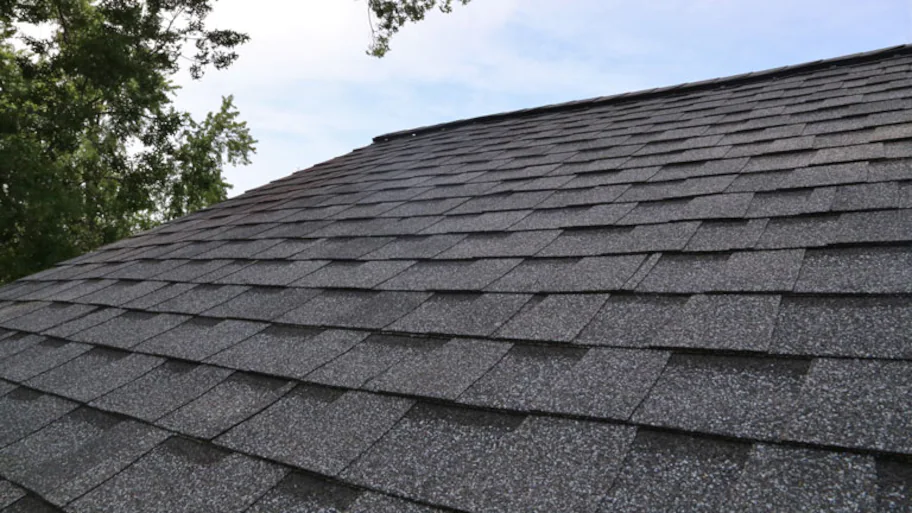Best Practices for Ensuring Correct Roofing Ventilation
Making certain correct roof ventilation is essential for the durability and effectiveness of a roof. A balanced intake and exhaust vent proportion, frequently 1:300, plays a pivotal function, with intake vents ideally put at the reduced edge of the roof for great air entry and exhaust vents at the optimal for warm air departure. Regular assessments to recognize obstructions and maintain clear air flow are critical. Keeping insulation away from vents is crucial to stop air movement limitation. Recognizing these foundational elements establishes the stage for even more comprehensive insights into installment and maintenance practices that can considerably boost your roof's efficiency.
Understand Air Flow Essentials
Correctly understanding ventilation fundamentals is necessary for guaranteeing the longevity and efficiency of roofing systems. Reliable ventilation mitigates wetness buildup and temperature extremes in the attic room, both of which can bring about substantial structural damages gradually. A well-ventilated roofing aids in avoiding typical issues such as mold and mildew growth, timber rot, and ice dams, which can jeopardize the stability of the roof covering materials and the underlying structures.
The main objective of ventilation is to assist in the movement of air, enabling a regular exchange in between the interior and outside atmospheres. This equilibrium is attained through a combination of intake and exhaust vents that function together to maintain optimal air flow. Intake vents, commonly situated along the eaves or soffits, enable fresh air to go into the attic room room, while exhaust vents, usually located at or near the roof ridge, enable warm, humid air to leave.
Secret aspects affecting the effectiveness of roof ventilation include proper positioning, adequate sizing, and making certain that both consumption and exhaust vents are unobstructed. Normal evaluation and upkeep are important to identify potential blockages, damages, or inadequacies in the air flow system, consequently securing the roof covering's efficiency and durability.
Sorts Of Roof Vents
Roof vents play a vital role in keeping effective attic air flow and, by expansion, the overall health and wellness of the roof. Various kinds of roofing system vents are readily available, each with special benefits tailored to particular roof covering demands. Ridge vents, for example, are set up along the roof's optimal, enabling cozy, moist air to run away from the attic. They use constant air flow and blend perfectly with the roofline, making them both effective and cosmetically pleasing.

Soffit vents are mounted under the eaves and job in tandem with roofing vents to ensure a balanced intake and exhaust system. By allowing cooler air to enter from below, soffit vents promote the expulsion of hot air with top vents. Gable vents, located on the outside wall surfaces of the attic room, offer another effective service, especially in homes with saddleback roofs.
Examine Your Current Air Flow

Following, think about the age and problem of your roof products and air flow parts. Older systems might not abide by current structure codes or may have degraded with time, minimizing their performance. Conduct a thorough assessment to recognize any kind of signs of damage, such as corrosion, damages, or voids that can compromise the system's performance.
Furthermore, gauge the attic room temperature and moisture levels. High temperature levels and moisture can suggest inadequate air flow - gainesville fl roofing companies. Utilize a hygrometer and thermostat to acquire precise readings, contrasting them with outside conditions. Consistent disparities suggest prospective concerns that require addressing.
Installment Best Practices
Effective installment of roofing air flow systems is paramount for ensuring optimal efficiency and long life. Appropriate installation starts with comprehending the certain air flow requirements of the roofing and the building it covers. This includes calculating the appropriate proportion of consumption to tire vents, usually adhering to the 1:300 rule, which specifies one square foot of air flow for every 300 square feet of attic room floor space.

Consumption vents ought to be mounted at the roofing system's lower edge, commonly in the soffits, to allow awesome air to enter. Exhaust vents, on the various other hand, must be installed near or at the roofing system's top to assist in the leave of cozy, moist air.
Seal all vent connections meticulously to avoid air leakages and possible water infiltration. Use high-quality products and follow supplier standards to ensure longevity and efficiency. Furthermore, integrating ridge vents with baffles can considerably enhance air flow efficiency by protecting against wind-driven rainfall and snow from getting in the attic room.
Inevitably, exact setup of roof air flow systems minimizes potential problems such as mold growth, ice dams, and structural damage, ensuring the roofing system's honesty and the building's total health and wellness.
Normal Maintenance Tips
Uniformity in maintenance methods is essential to ensuring the long-term effectiveness of roof covering air flow systems. Routine assessments are critical, ideally done biannually-- in the spring and autumn. During these examinations, make certain that vents are cost-free of debris, nests, and other obstructions that might hinder air movement. Examine for any kind of indicators of wetness accumulation or mold, as these can suggest inappropriate air flow or leaks (roofing companies in gainesville florida).
Utilize a soft brush or a vacuum to eliminate dust and debris from intake and exhaust vents. Be cautious not to harm the vent displays or louvers throughout the process.
Correct insulation is just as important. Make certain that attic room insulation does not obstruct the vents, as this can badly limit air flow. our website Reposition or change it to maintain a reliable barrier. if any kind of insulation has actually moved or resolved.
Finally, change any type of damaged or missing out on elements without delay. Broken vents, cracked shingles, or deteriorated flashing can all contribute to insufficient air flow and ought to be resolved immediately. Routine upkeep makes sure that the roof air flow system functions efficiently, consequently extending the lifespan of the roof covering itself.
Verdict
Making sure proper roof ventilation is extremely important for keeping the performance and durability of a roof covering system. Adherence to the 1:300 consumption and exhaust vent proportion, combined with the strategic positioning of vents, is crucial.
A balanced intake and exhaust vent proportion, commonly 1:300, plays an essential function, with consumption vents preferably positioned at the lower edge of the roofing for read the article amazing air entrance and exhaust vents at the optimal for cozy air exit. Consumption vents, typically located along the eaves or soffits, enable fresh air to get in the attic room, while exhaust vents, typically situated at or near the roof covering ridge, enable warm, damp air to escape.
Soffit vents are installed under the eaves and work in tandem with roofing vents to ensure a well balanced intake and exhaust system. By allowing cooler air to enter from below, soffit vents assist in the expulsion of hot air via upper vents. Adherence to the 1:300 intake and exhaust vent ratio, combined with the tactical placement of vents, is essential.